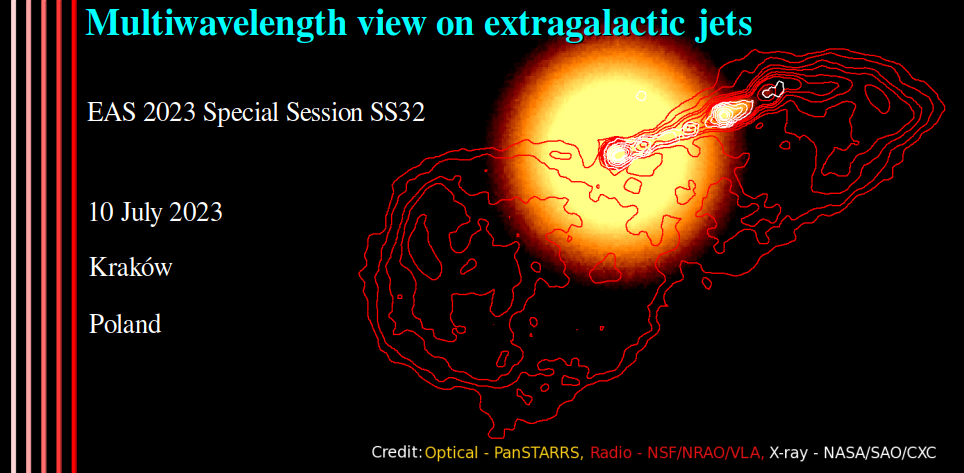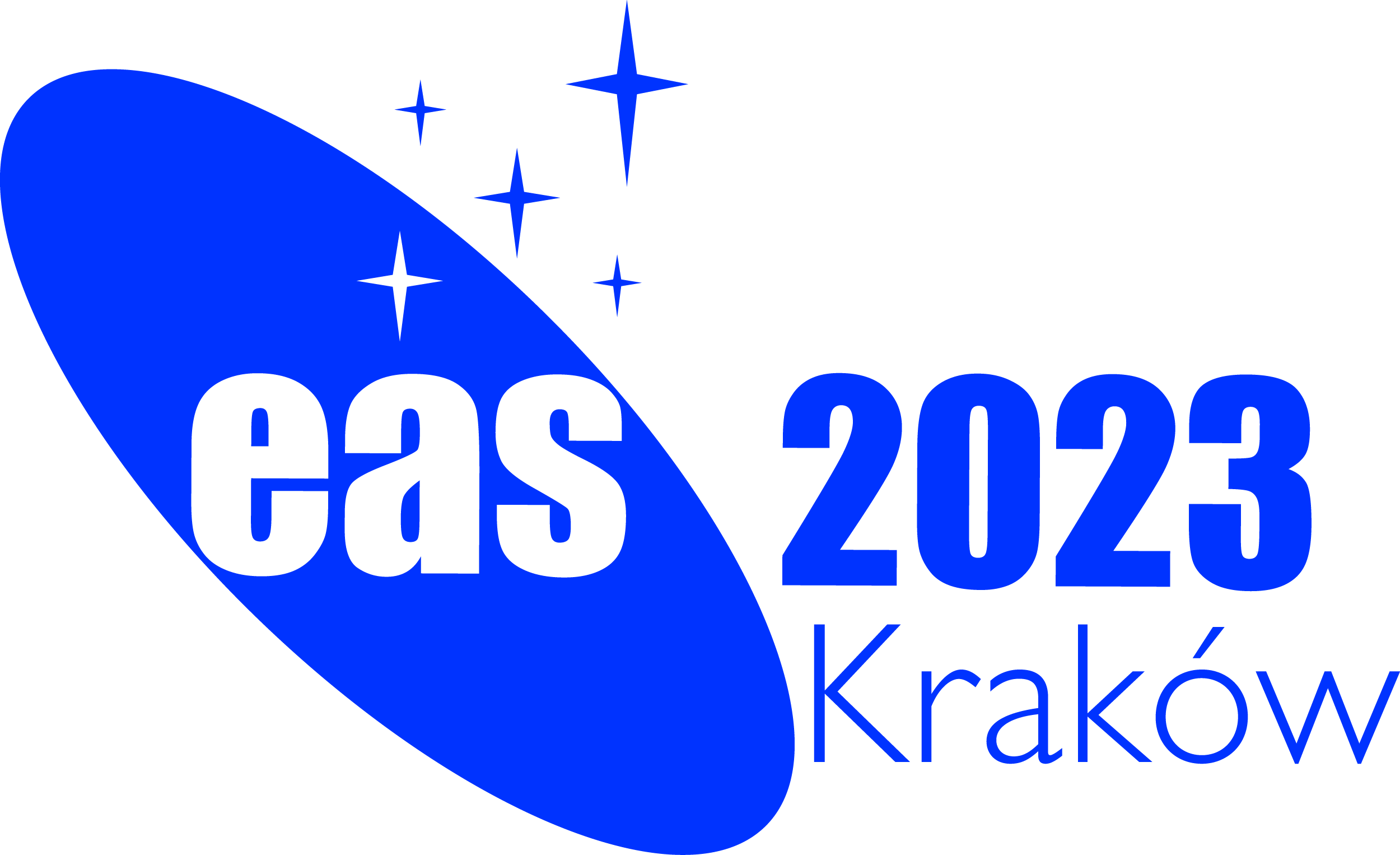Special Session SS32
10 July 2023
Multiwavelength view on extragalactic jets

Aims and scope
More than 100 years have passed since the discovery of the first astrophysical jet, and the phenomenon still fascinates and is studied on many levels. The largest and the most powerful radio jets are produced by supermassive black holes in the center of active galaxies (AGN) such as quasars and radio galaxies. After launch they can survive well colimated at lengths of up to hundreds of kiloparsecs, leading to stunning morphologies, and are detectable over the entire electromagnetic spectrum. What is important is that extragalactic jets carry the energy and information about the black hole spin and magnetic field across the large distances what impact the evolution of the surrounding medium and is a clear example of feedback.
New and soon available next-generation multi-wavelength surveys are the source of further discoveries and interesting results due to improved sensitivity or changing the field of view. Also very important, slightly neglected for a long time, are the observations of AGNs at lower radio frequencies with a resolution comparable to observations in the GHz range. Such observations provide a unique opportunity to study the oldest plasma with exceptional accuracy and detail, and thus to characterize the surrounding environment, magnetic field and to test particle acceleration and jet termination models.
Therefore, in this Special Session we propose to bring together communities from across the field to share their latest findings and discuss the use of this wealth of new information. We plan to address questions on topics such as: characteristics of the central engine and accretion process, the jet impact on the interstellar and intergalactic environment, jet composition and structure in radio, X and gamma rays. But we would also like to discuss various AGN unification models and their early stages of evolution, namely Gigahertz-Peaked Spectrum (GPS) and Compact Steep Spectrum (CSS) objects, which are the first signs of relativistic jet feedback in evolving galaxies.
Contributions not selected for an oral presentation will have a chance to be presented as posters.
Programme
- Characteristic of the central engine and accretion process
- Jet composition and its impact on the environment
- Multiwavelength observations
- Radio-loud AGNs and their life cycles
Invited speakers
- Bożena Czerny (CTP, Poland)
- Manel Perucho (Univ. de València, Spain)
- Giulia Migliori (INAF, Italy)
- Martin Hardcastle (Univ. of Hertfordshire, UK)
Scientific organisers
- Gabriele Bruni (INAF, Italy)
- Marek Jamrozy - co-chair (Jagiellonian Univ., Poland)
- Magdalena Kunert-Bajraszewska - chair (Nicolaus Copernicus
Univ., Poland)
- Elaine Sadler (Univ. of Sydney, CSIRO, Australia)
- Dhruba J. Saikia (IUCAA, India)
- Aneta Siemiginowska (CfA, USA)
Contact
If you have substantive questions regarding this Special Session please contact:
Updated on Wed Jan 11 14:12:28 CET 2023
|

 A power cut will shut down all EAS services on Tuesday, 10 January 2017 starting at 7:30 CET.
A power cut will shut down all EAS services on Tuesday, 10 January 2017 starting at 7:30 CET.


